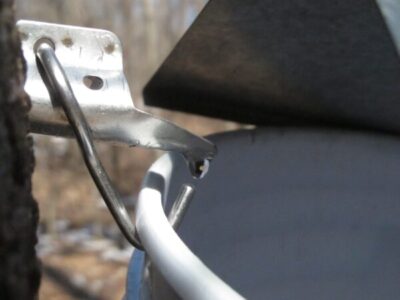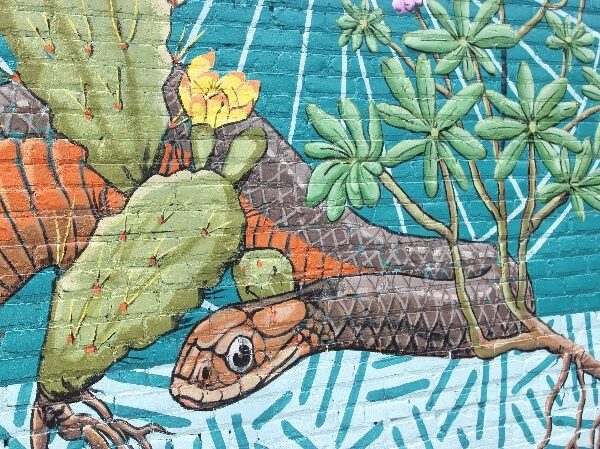This is a part of “A Year in the Wild Kitchen of the Great Lakes,” a series in partnership with expert forager Lisa M. Rose, with the mission of nurturing a deeper connection with the natural world through foraging. To get started with your foraging journey, begin here with our “Framework to Sustainable and Safe Practices.”
This spring break, transform your usual holiday into an educational excursion that connects your family with the natural world. Through hands-on learning and shared experiences, foraging can provide invaluable lessons in sustainability, conservation and the joy of discovering the natural world right at our footsteps.
With over 20 years experience in the field working with people of all ages connecting to place with wild plants AND successfully having raised my own two children to be engaged and inspired by the natural world around them, I’ve designed this mini-guide to introduce children how to forage and foster a lifelong connection with nature and an understanding of ecological responsibility.
Read on and learn how to bring these fundamentals to life and then learn an easy and fun pesto recipe based on wild greens — a great delicious way to wrap up a day learning wild plants and feed a hungry crew!
Getting Started: Foraging Fundamentals
The first step in foraging is simply to get outside and start exploring your local environment. Equip your kids with their own foraging bags and let them lead the way. Encourage them to use their senses to engage with their surroundings — this not only makes the experience fun but also educational.
Being Smart & Safe About Where You Forage: A Framework
When embarking on foraging expeditions with your family, prioritizing safety ensures everyone not only has fun but also respects the environment and its regulations.
Just like we teach kids to look both ways before crossing the street, we also need to teach them to “read the land” before foraging. Some environments may appear green and lush but carry hidden pollutants in the soil, water, or air that can affect the safety of the plants we gather. The following recommendations will get you set in a direction that empowers you to embark on a safe and fun foraging season with your family.
Know the Laws: Can I forage here?
Always check that you have explicit permission to forage in any area, particularly if it’s private property. Teach your children to respect the boundaries and property of others, which includes adhering to any signs or rules that might restrict access or specific activities.
Familiarize yourself and your family with local foraging laws and regulations. These can vary widely depending on the region and may include specific guidelines about which plants can be harvested, when, and in what quantities. This knowledge is crucial for ensuring that your foraging activities are legal and ethical.
By layering in these land-awareness lessons, you’re reinforcing the idea that safe foraging starts well before the plant is picked. Show them how to assess the surroundings before getting excited about a plant find. This teaches critical thinking, not just plant ID and that foraging begins with reading the land, respecting the environment and choosing places that support healthy ecosystems.
Know the Land: What has taken place here?
Look up the history of the land. Was it once a factory site? A golf course? Is it near old railroad tracks or a busy road? These areas might carry residual chemicals or heavy metals that make foraging unsafe. Check with local parks departments or landowners if you’re unsure — many municipalities offer soil reports or land use histories.
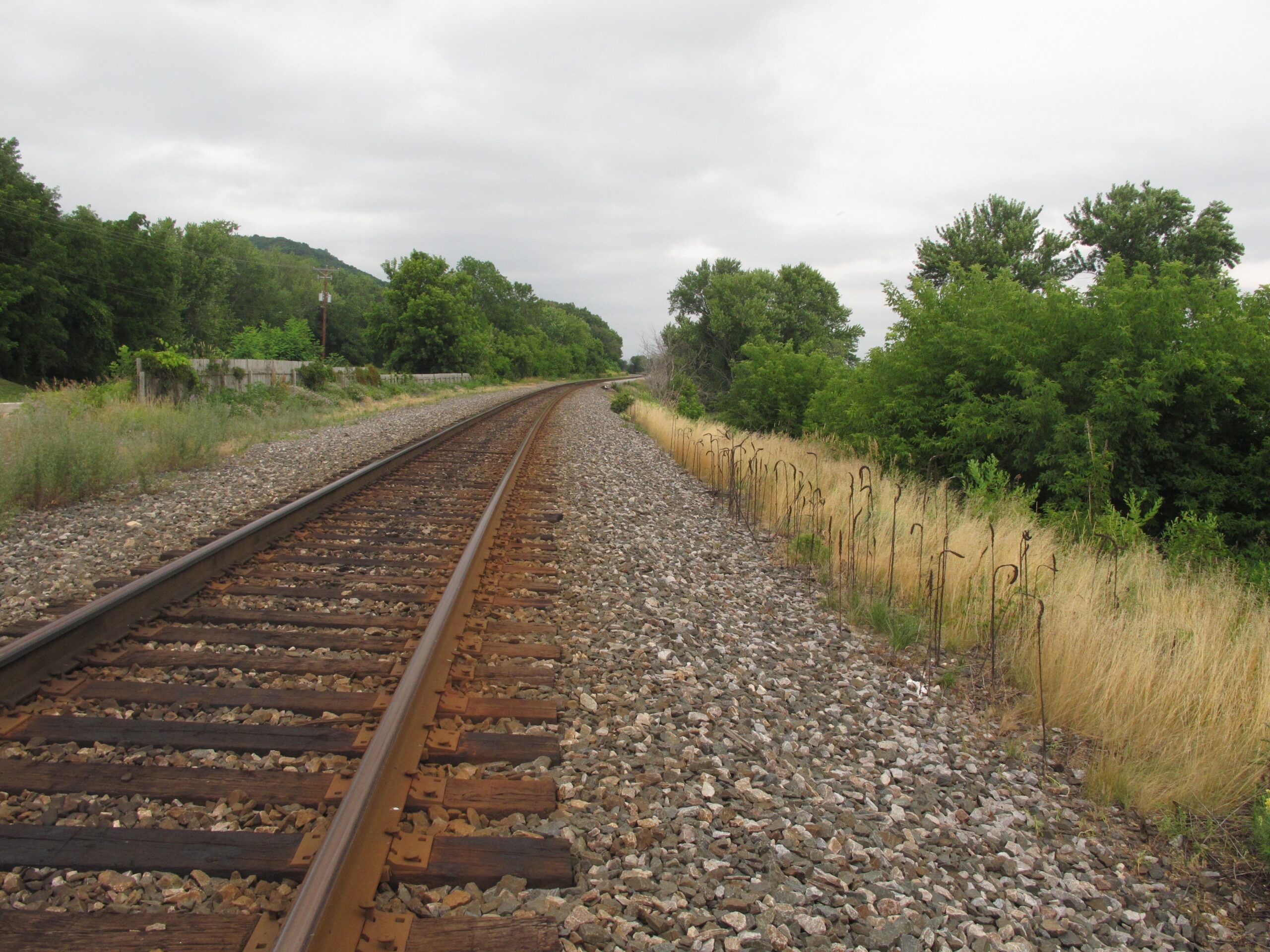
Avoid areas like railroad tracks when crafting your foraging plan. (Photo Credit: Lisa M. Rose)
Be sure to steer clear of these areas, especially in urban areas:
- Urban Brownfields and Old Industrial Sites: Plants growing here may have absorbed heavy metals like lead or arsenic.
- Agricultural Runoff Areas: Plants growing near large farms or feedlots might be exposed to nitrates or bacteria from manure runoff.
- Roadsides and Railways: While tempting for their convenience, these areas are often treated with salt, chemicals or herbicides — and they’re magnets for pollution.
Head to areas with minimal development and a known land history, like conservation lands, nature preserves (observe no-harvest rules), or your own backyard. Focus on plants known to be less prone to soaking up toxins — dandelions and violets in clean, wild lawns are often a good bet.
Know the Plants: Plant Identification
Remember — If you don’t know what it is, don’t put it into your mouth! Before harvesting any plant, it’s crucial to confirm its identity, as well as understand the context of the surrounding areas in which the plant may be growing.
Use well-respected field guides specific to your region or download reputable foraging apps that provide detailed information and photos for accurate identification. Teach your children the importance of cross-referencing multiple sources to confirm a plant’s identity. This step is vital to avoid the dangers of misidentifying plants, which can lead to harmful or even fatal consequences.
Learn if plants are perennial or annuals — and also learn their distribution across your area. Those that are protected or endangered are off-limits to foragers and should be admired only from a distance to help preserve their populations.
Embrace the dastardly “weeds” that are edible and considered invasive as a basis of the majority of your foraging haul. We love dandelions, nettles, garlic mustard, burdock — all of which reproduce rapidly and are abundant across the Great Lakes region.
Recognize Indigenous Lands
Cultivating a deep respect for the land and its historical significance is crucial in teaching children about responsible and ethical foraging. Begin your foraging journey with a discussion about the Indigenous peoples who historically lived and managed the land you are exploring. Explain how these communities used and respected the natural resources available to them.
Teach children the importance of acknowledging the history and culture of these lands. Encourage them to consider the land as a living entity that holds cultural significance and ancestral heritage. This can be integrated into the foraging activity by reading a land acknowledgment statement together before starting.
Make the Learning Interactive
Transform your family foraging adventure into an exciting and educational journey with interactive activities that engage both the mind and the senses. Here’s how to make the experience memorable and fun for kids:
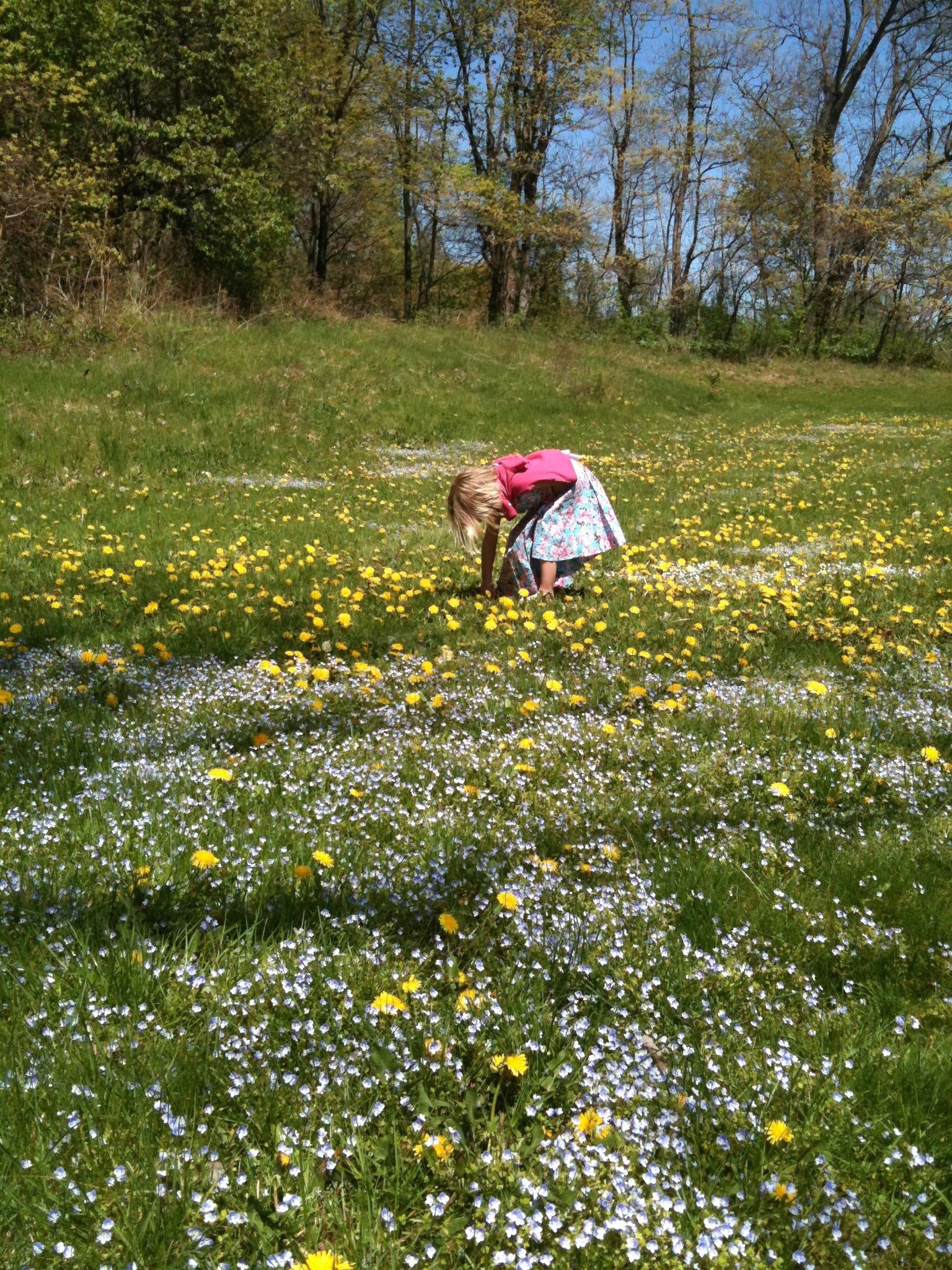
Children learn best by doing. Create safe, fun, and self-guided adventures to get kids outside, exploring landscapes and build critical life skills this spring break. (Photo Credit: Lisa M. Rose)
Scavenger Hunts: Create a scavenger hunt with a list of common, safe plants that are likely to be found in your chosen environment. Each child can have their own list, complete with pictures for easier identification. Incorporate small rewards for each plant found, such as stickers or a small nature-related toy. This adds an element of game-play that keeps children excited and motivated to learn.
Include Art: Encourage children to keep a foraging journal. Provide them with notebooks where they can sketch the plants they find, describe where they found them and note any interesting facts learned during the day. Have them write or dictate what they’ve learned about each plant, including its uses and any folklore or stories associated with it. This helps reinforce their memory and understanding of each plant.
Cooking: Use the plants you gather to cook simple recipes together. This can be a fun and tasty way to learn about the nutritional and medicinal benefits of each plant. Prepare dishes that are easy and safe for kids to participate in making, such as dandelion salads, nettle pesto or violet-infused lemonade. For younger children, involve them in washing the greens or assembling the dishes. Discuss the health benefits of each ingredient as you cook. For instance, explain how dandelions are high in vitamins A, C and K, or how violets can help soothe inflammation.
Interactive Mapping: Before heading out, show the kids how to read a simple map of the area you’ll be exploring. During the foraging trip, have them mark the locations where different plants are found, creating their own “forager’s map.” This activity enhances spatial awareness and teaches children how to associate plant locations with certain landmarks or features in the landscape.
Now Get Outside! What Will You Find?
Early Spring Greens
Spring offers a bounty of wild edibles that are perfect for beginners due to their abundance and ease of identification:
- Dandelions (Taraxacum officinale): Ubiquitous and easily recognizable, dandelions are a foraging favorite. Every part of the dandelion is edible: the flowers can be made into a jelly or batter-fried, leaves added to salads or sautéed as a green, and roots roasted for a coffee substitute. Rich in vitamins A, C and K, they are a nutritious addition to spring meals.

Dandelions in bloom, early May. (Photo Credit: Lisa M. Rose)
- Violets (Viola spp.): These lovely flowers add a pop of color and a sweet flavor to dishes. The leaves and flowers are edible; the flowers make delightful additions to salads or can be crystallized with sugar for desserts. Violets contain vitamin C and vitamin A, making them a healthy and attractive edible flower.
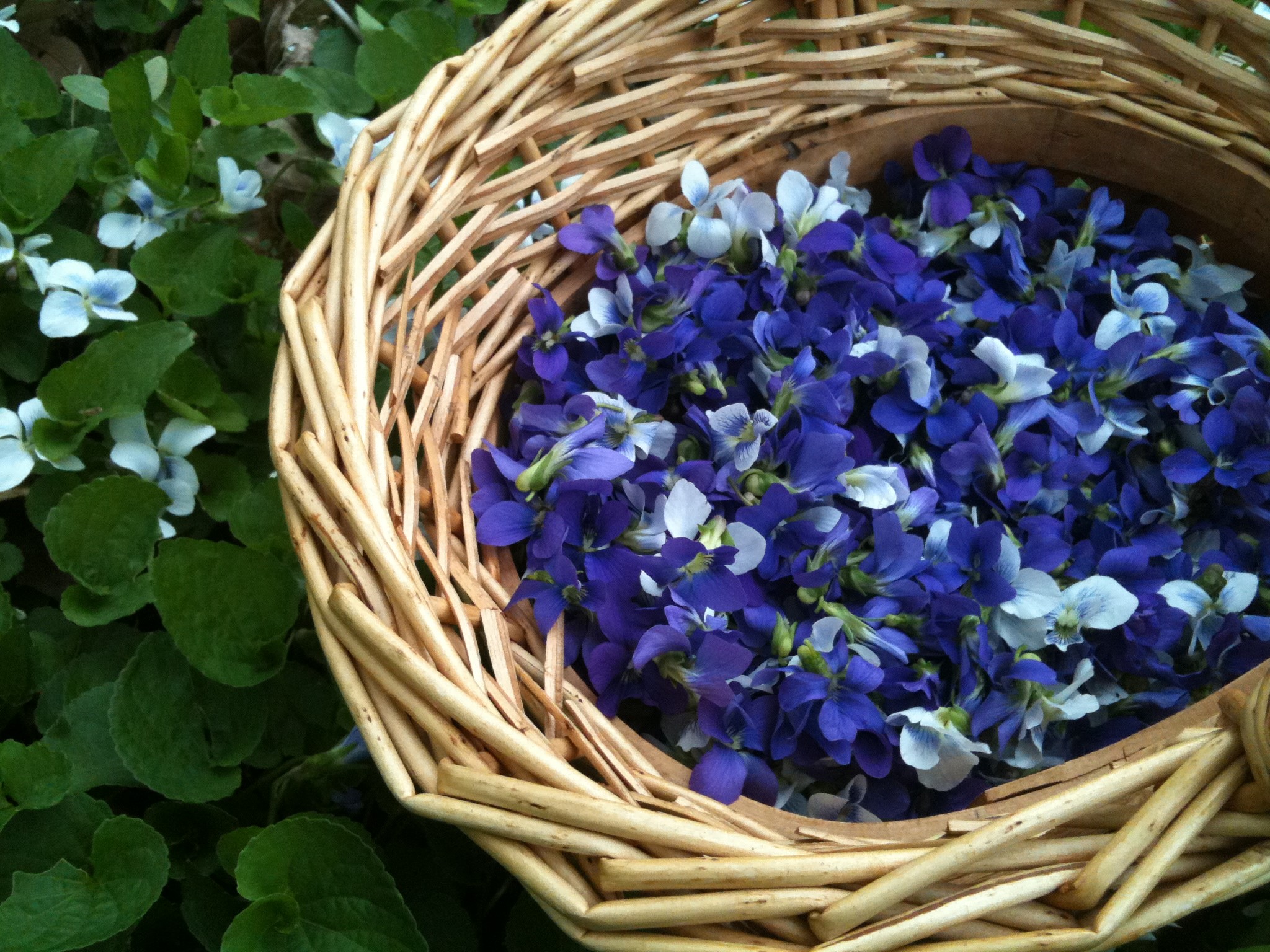
Violets harvest in springtime. (Photo Credit: Lisa M. Rose)
- Nettles (Urtica dioica): While they must be handled with care due to their stinging hairs, once cooked, nettles lose their sting and offer a rich, spinach-like flavor with high levels of iron, potassium, manganese, calcium and vitamins A, C and K. They are excellent in soups, teas, or simply steamed as a side dish.
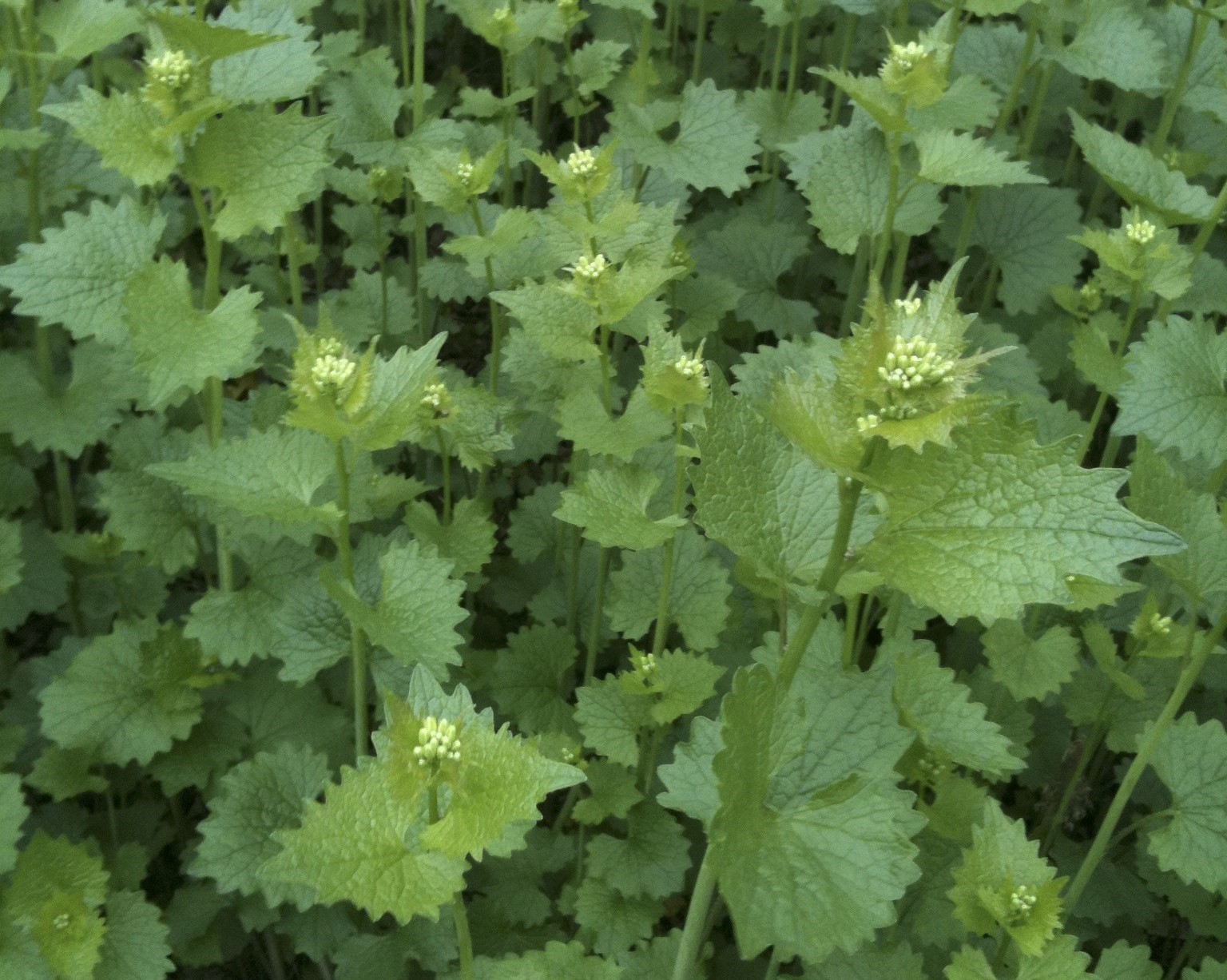
Garlic mustard in bloom in early spring. (Photo Credit: Lisa M. Rose)
- Garlic Mustard Greens (Brassica spp.): These peppery leaves are found in disturbed soils and fields. Young leaves are great in salads, while older leaves can be cooked down like collards, or can be used in a yummy pesto recipe for pastas and flatbreads. They’re high in vitamin C and A and add a spicy kick to any meal.
Garlic Mustard Pesto Recipe
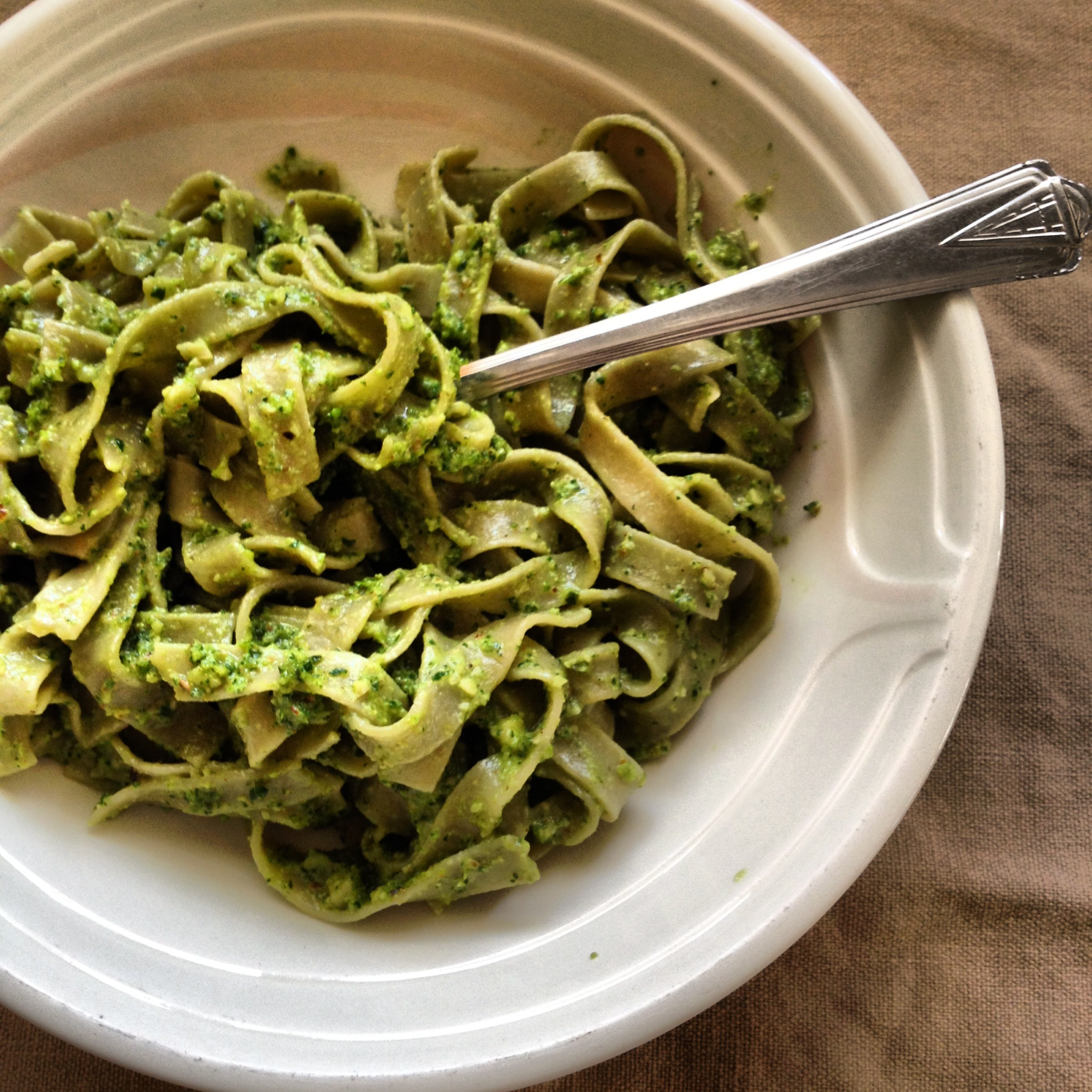
Garlic mustard pesto featured in a simple pasta dish for a light spring lunch. (Photo Credit: Lisa M. Rose)
Garlic Mustard (Alliaria petiolata) first made its appearance on the Atlantic coast in 1868, introduced by settlers in Long Island, NY, for its food and medicinal uses. Since then, it has spread extensively, particularly affecting the fields, floodplains, and woodlands of the Eastern United States, including the Great Lakes Bioregion.
Recognized as an invasive species, garlic mustard outcompetes native flora, leading to significant ecological impacts. Despite its invasive nature, garlic mustard can be utilized in the kitchen, transforming a problematic weed into a delicious and versatile ingredient. Use this pesto on flatbreads, pastas, rices and even stir fries.
Ingredients:
- 4 cups of garlic mustard leaves and stems, thoroughly washed
- 1 cup wild chives
- 1 cup wild garlic scapes
- 1 cup parsley (optional, for added flavor)
- 1 cup walnuts or pine nuts (optional, as nuts can be omitted if planning to freeze)
- 4 tablespoons olive oil
- 1 teaspoon sea salt
- Freshly ground black pepper, to taste
- A squirt of lemon juice, for a fresh zesty note
Preparation:
- Prep the Greens: Start by thoroughly washing the garlic mustard leaves and stems to remove any dirt or debris. Ensure they are dry before use.
- Combine Ingredients: In a food processor, combine the garlic mustard, wild chives, garlic scapes, and parsley if using. Pulse a few times to chop the ingredients coarsely.
- Add Nuts and Seasonings: Add the walnuts or pine nuts to the processor along with olive oil, sea salt and black pepper. If you plan to freeze the pesto, consider omitting the nuts as they can develop a rancid taste after thawing.
- Blend: Process all ingredients until the mixture reaches your desired consistency. For a smoother pesto, add more olive oil and continue to blend.
- Adjust Seasonings: Taste the pesto and adjust the seasoning with more salt, pepper, or lemon juice as needed.
About the Author

Lisa M. Rose is an ethnobotanist, wild foods chef, and author with a profound dedication to exploring the symbiotic relationship between humans and plants. With an academic background in anthropology and community health, her culinary journey has been rich and varied, including stints with notable establishments and figures such as Stags Leap in Napa Valley, Alice Waters’ The Edible Schoolyard, and organic farmers in Northern Michigan.
Rose’s work is celebrated in her bestselling books, “Midwest Foraging” and “Midwest Medicinal Plants,” among others and her expertise is frequently sought by major media outlets, including the Chicago Tribune, PBS, NPR, Martha Stewart and CNN.
Catch more news at Great Lakes Now:
Tapping Into Tradition: It’s Maple Syrup Season
Winter Wellness Pantry: Elderberry Elixir
Featured image: Lisa M. Rose, guiding children through the basics of plant identification and safe foraging basics. (Photo Credit: Seth D. Starner)


